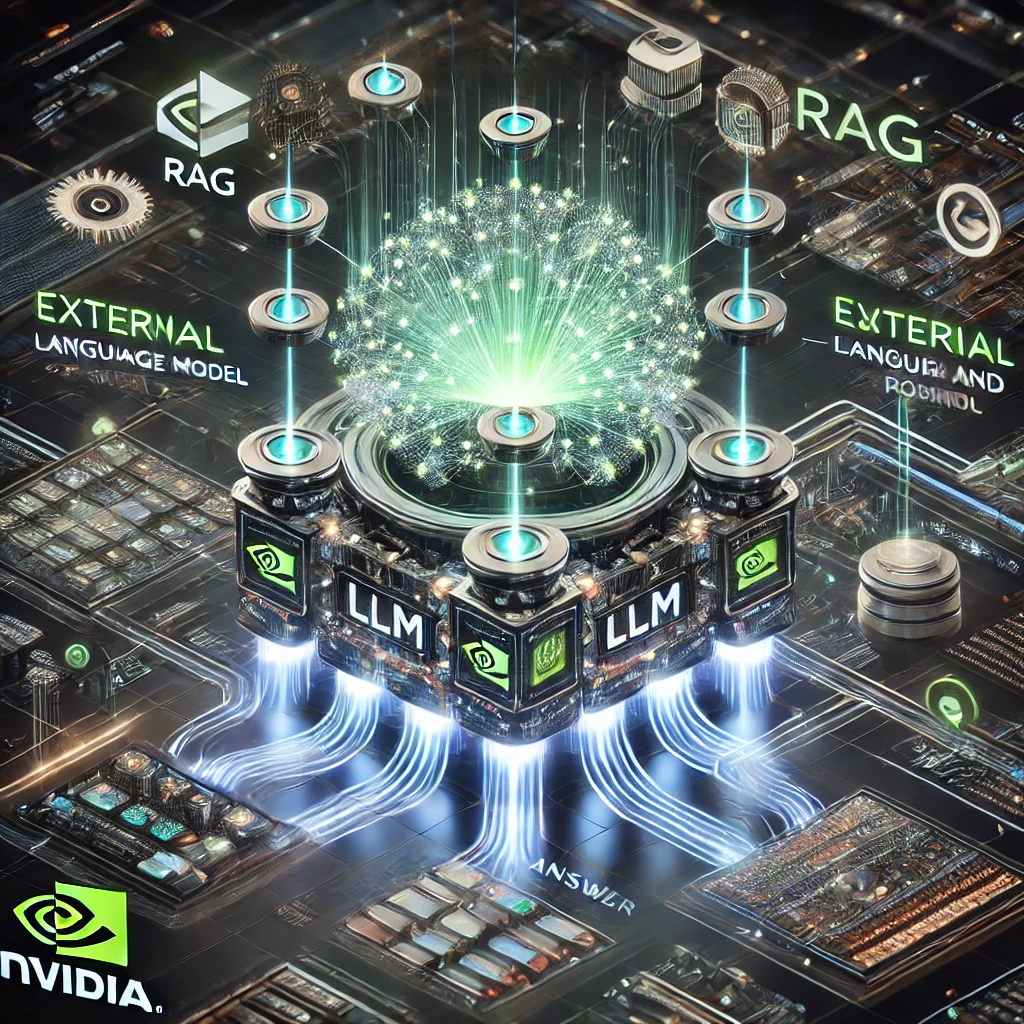Table of Contents
- Introduction
- Understanding DeepSeek-V2 and GPT-4
- Key Differences Between DeepSeek-V2 and GPT-4
- Advantages of DeepSeek-V2
- Use Cases and Applications
- Limitations of DeepSeek-V2
- How DeepSeek-V2 Is Changing the AI Landscape
- Final Thoughts
Introduction
The AI industry is witnessing a revolution with the rise of DeepSeek-V2 vs. GPT-4, two powerful large language models (LLMs).DeepSeek-V2 is this new open-source AI model that’s been turning heads lately—apparently it’s giving OpenAI’s GPT-4 a real run for its money in some key areas. But what’s the actual difference between them? And why are people calling DeepSeek-V2 a potential game-changer? Let’s dive deep into the details.
Understanding DeepSeek-V2 and GPT-4

DeepSeek-V2 and GPT-4
What Is DeepSeek-V2?
DeepSeek-V2 is an open-weight AI model that rivals proprietary models like GPT-4. It offers researchers and developers access to state-of-the-art language capabilities without the limitations of closed-source AI. DeepSeek-V2 is built to be scalable and adaptable, making it a strong candidate for various NLP applications, from chatbots to content generation.
What Is GPT-4?
GPT-4, developed by OpenAI, is a powerful LLM known for its advanced reasoning, creativity, and contextual understanding. Unlike DeepSeek-V2, which offers full transparency, GPT-4 remains a proprietary model, restricting access to its training data and architecture. GPT-4 excels in nuanced text generation, making it a preferred choice for commercial applications.
Key Differences Between DeepSeek-V2 and GPT-4
| Feature | DeepSeek-V2 | GPT-4 |
|---|---|---|
| Accessibility | Open-weight | Closed-source |
| Training Data | Publicly available | Proprietary |
| Fine-Tuning | Customizable | Limited access |
| Cost | Free/Open-source | Subscription-based |
| Performance | Competitive with GPT-4 | Industry leader |
| Transparency | High | Low |
| Community Support | Strong open-source collaboration | OpenAI-backed |
Advantages of DeepSeek-V2

Advantages of DeepSeek-V2
1. Open-Weight Model
DeepSeek-V2 provides open access, allowing developers to fine-tune and experiment without restrictions, making it an ideal choice for research and innovation.
2. Transparency and Customization
Unlike GPT-4, a black-box model, DeepSeek-V2 allows users to modify and retrain it for specific use cases. This level of transparency enhances trust and security in AI applications.
3. Cost-Effective
With GPT-4’s subscription-based model, access to premium AI comes at a price. DeepSeek-V2, being open-weight, eliminates this cost barrier and provides cutting-edge AI capabilities for free.
4. Community Collaboration
The open-source nature of DeepSeek-V2 fosters a strong community-driven development ecosystem, unlike GPT-4, which remains controlled by OpenAI. Developers and researchers can work together to enhance the model’s capabilities over time.
Use Cases and Applications

Use Cases
1. AI Research & Development
Researchers can modify DeepSeek-V2 for NLP advancements, making it a superior choice for academic and industry research.
2. Business AI Solutions
Companies can integrate DeepSeek-V2 into applications without licensing fees, making it ideal for startups and enterprises looking for scalable AI solutions.
3. Content Generation & Chatbots
Like GPT-4, DeepSeek-V2 can generate high-quality content, chatbots, and AI-driven support systems, but with the advantage of customization and free access.
4. Personalized AI Assistants
With its fine-tuning capabilities, DeepSeek-V2 can be tailored for specific tasks, such as AI tutors, personal assistants, and recommendation systems.
Some factor analysis:-
1. Open-Weights Democratize AI Development
Shocking Factor: Anyone can inspect, modify, or build on DeepSeek-V2’s code and weights—for free.
Unlike GPT-4, which operates as a tightly guarded “black box,” DeepSeek-V2’s open-weight design allows developers, researchers, and even hobbyists to tinker with its architecture. This transparency addresses major concerns about bias, safety, and accountability in AI. Startups and academic teams are already using it to create specialized tools (e.g., medical diagnostics, legal assistants) without paying hefty API fees.
GPT-4’s Limitation: Proprietary models lock out smaller players, stifling grassroots innovation.
2. It Matches GPT-4’s Performance—With 10x Less Compute
Shocking Factor: DeepSeek-V2 reportedly rivals GPT-4’s output quality while using a fraction of the computational resources.
Leaked benchmarks suggest DeepSeek-V2’s leaner architecture achieves comparable results in tasks like coding, reasoning, and creative writing. It’s secret? A novel training approach that prioritizes data quality over brute-force scaling. This efficiency slashes operational costs, making advanced AI accessible to nonprofits and schools.
GPT-4’s Achilles’ Heel: Training costs exceeding $100 million put similar advancements out of reach for most.
3. Customization Without Limits
Shocking Factor: Users can fine-tune DeepSeek-V2 for niche tasks—without OpenAI’s guardrails.
While GPT-4 restricts customization to comply with safety policies, DeepSeek-V2’s open framework lets developers mold it for controversial or high-stakes use cases. For example:
- A climate lab trained it to simulate deforestation impacts.
- An indie game studio built an uncensored NPC dialogue system.
Critics warn this could enable misuse, but supporters argue openness fosters responsible experimentation.
GPT-4’s Drawback: Strict content filters limit adaptability for edge-case applications.
4. The “Ethical AI” Revolution
Shocking Factor: DeepSeek-V2’s training data and decision-making processes are fully auditable.
GPT-4’s opacity has sparked debates about hidden biases and copyright issues. DeepSeek-V2, by contrast, publishes its training datasets and model weights, letting third parties audit for fairness, plagiarism, or toxicity. This transparency has won praise from AI ethicists—and pressure on closed models to follow suit.
GPT-4’s Risk: Lawsuits and regulations loom as governments demand explainable AI.
5. A Grassroots Community Is Beating Corporate Giants
Shocking Factor: Volunteer developers are outpacing OpenAI’s updates.
DeepSeek-V2’s open model has spawned a global community of contributors who rapidly patch flaws, add features, and optimize performance. For instance:
- A developer in Nairobi integrated Swahili language support in just 48 hours.
- Open-source plugins (e.g., real-time fact-checking) now rival GPT-4’s paid offerings.
This decentralized innovation cycle threatens OpenAI’s top-down development model.
GPT-4’s Weakness: Updates are slow, prioritizing corporate clients over public needs.
The Bottom Line
DeepSeek-V2 isn’t just another GPT-4 competitor—it’s a manifesto for the future of AI. By prioritizing accessibility, efficiency, and transparency, it challenges the idea that only tech giants can drive progress. While GPT-4 still leads in polish and scalability, the open-weight movement is proving that democratized AI might be the ultimate disruptor.
One thing’s clear: The AI race just got a lot more interesting.
DeepSeek-V2: The Open-Weight Maverick
Core Architecture:
- Transformer-Based Design: Built on a modified transformer architecture optimized for efficiency.
- Sparse Attention Mechanisms: Reduces computational overhead by focusing on critical token relationships (unlike GPT-4’s dense attention).
- Dynamic Parameter Routing: Allocates compute resources adaptively based on task complexity.
Training Approach:
- Quality-Over-Quantity Data Curation: Trained on a smaller, highly curated dataset (vs. GPT-4’s massive web-scale data).
- Community-Driven Fine-Tuning: Leverages open-source contributions to refine performance in niche domains (e.g., coding, science).
Key Structural Innovations:
- Open-Weights Framework: Full access to model weights enables customization, audits, and ethical scrutiny.
- Modular Design: Users can “swap out” components (e.g., safety filters, task-specific layers) without retraining the entire model.
- Energy Efficiency: Achieves GPT-4-level performance with ~10% of the computational resources.
GPT-4: The Proprietary Powerhouse
Core Architecture:
- Dense Transformer Network: Uses a classic, heavily scaled transformer model with trillions of parameters.
- Mixture-of-Experts (MoE): Likely employs a MoE system to specialize subsets of parameters for different tasks.
- Proprietary Scaling: Optimized for maximum performance via brute-force compute and data (exact details are undisclosed).
Training Approach:
- Web-Scale Pretraining: Trained on petabytes of diverse internet data, including text, code, and multimedia.
- Reinforcement Learning from Human Feedback (RLHF): Uses human trainers to refine outputs for safety and alignment.
- Closed-Loop Updates: Improvements are rolled out centrally by OpenAI, with limited user input.
Key Structural Innovations:
- Closed Ecosystem: Tight control over model access ensures consistency and safety (but limits flexibility).
- Multimodal Capabilities: Integrates text, image, and eventually video processing in a unified framework.
- Enterprise-Grade Scalability: Optimized for high-throughput, low-latency API deployments (e.g., ChatGPT, Copilot).
Structural Comparison: Why It Matters
| Aspect | DeepSeek-V2 | GPT-4 |
|---|---|---|
| Transparency | Open weights, auditable training data | “Black box” design, no public scrutiny |
| Customization | Full user control over fine-tuning | Limited to OpenAI-approved parameters |
| Compute Efficiency | Lean architecture, low resource demands | Requires massive compute infrastructure |
| Innovation Cycle | Community-driven, rapid iterations | Centralized, slow corporate updates |
| Ethics & Safety | Crowdsourced audits, decentralized fixes | Top-down policies, opaque safeguards |
Why Their Structures Define Their Futures
- DeepSeek-V2: Prioritizes adaptability and democratization. Its modular, open structure invites grassroots innovation but risks fragmentation and misuse.
- GPT-4: Focuses on polish and control. Its closed, monolithic design ensures reliability for enterprise users but stifles niche applications.
The Takeaway:
- Choose DeepSeek-V2 if you value transparency, customization, or resource efficiency.
- Choose GPT-4 if you need battle-tested reliability, scalability, or multimodal support.
The battle isn’t just about performance—it’s a clash between open vs. closed AI philosophies, and the winner could shape who controls the future of the technology.
Limitations of DeepSeek-V2
- Performance Gaps: GPT-4 still holds an edge in nuanced reasoning and contextual understanding due to its proprietary fine-tuning and extensive dataset.
- Lack of Optimization: Open-source models often require additional tuning and resources to match the seamless performance of proprietary solutions.
- Limited Enterprise Adoption: Since GPT-4 is backed by OpenAI’s enterprise support, many businesses still prefer it over open-weight alternatives.
How DeepSeek-V2 Is Changing the AI Landscape
DeepSeek-V2 represents a major shift towards open AI development. It democratizes AI and enables widespread innovation by offering an alternative to closed-source models like GPT-4. Many researchers and organizations are moving towards open-weight solutions for their flexibility, cost efficiency, and collaborative potential.
DeepSeek-V2’s rise signifies a growing preference for open AI solutions. It has the potential to disrupt industries by offering high-quality AI tools without the cost and ethical concerns of proprietary models.
Final Thoughts
The DeepSeek-V2 vs. GPT-4 debate highlights the growing demand for open-weight AI models. While GPT-4 remains the industry leader in certain aspects, DeepSeek-V2’s open-source approach is a game-changer, offering unmatched accessibility and innovation. Whether you’re a researcher, developer, or AI enthusiast, DeepSeek-V2 is a model worth exploring.


